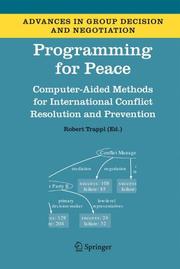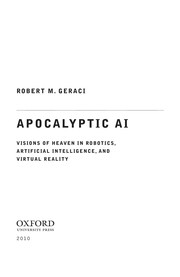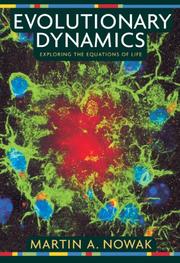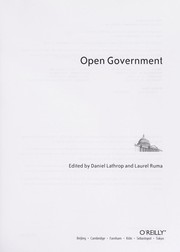Programming for Peace, Computer-Aided Methods for International Conflict Resolution and Prevention edited by Robert Trappl - ISBN 1402043775 - Springer 2006
Motivation
Reading Evolutionary Dynamics and founding the application of its principle and computer science very interesting.
Pre-reading model
Draw a schema (using PmGraphViz or another solution) of the situation of the area in the studied domain before having read the book.
Reading
- Preface - Robert Trappl
- Introduction - Robert Trappl
- "<<Programming for Peace>> should not mean <<peace at any price>>. It even could mean <<war>> in order to establish <<long-term peace>>. The title invites misinterpretation. " (p1)
- "This volume, however, is focused on one specific task: the study and application of computer-aided methods for international conflict resolution and prevention." (p2)
- description of each chatper from page 3 to 7
- use of the term "peacefare" (p7)
- "The final remark in Kirstie Bellmann's chapter is the best conclusion for this introduction: <<Hopefully, this paper and its companion papers in this volume will start the discussion towards both experimentation and experience in Peacefare.>>" (p7)
Part I
- Conflict Resolution by Democracies and Dictatorships: Are Democracies Better in Resolving Conflicts?
- "The chapter deals with the capacities of various regimes to master conflicts" (p11)
- "Cross-calculations show that, not surprisingly, on the whole democracies have had a better record in the management of conflicts than other regimes. " (p11)
- "The discussion concentrates rather on the theoretical foundation of that <<law>> [democratic peace]." (p11)
- "it is empirically proven that governments that feel threatened try to compensate this by the increase of their armaments. By this they trigger the so called security dilemma: neighbouring countries feel threatened as well and increase their armaments, thus escalating the arms race. " (p21)
- "The hypothesis that democracies have a higher potential for resolution than dictatorships can, therefore, be supported by the statistical test. " (p28)
- Conclusions with note on each hypothesis tested (p35-36)
- Trade Liberalization and Political Instability in Developing Countries
- "According to the neoclassical perspective, trade renders the division of labor between states more efficient. " (p51)
- Information Feudalism describes in length the globalization process from the viewpoint of WTO, then known as GATT, but also developping country and the negociation process
- "States that have opened up to international competition use their comparative advantage, and thus can produce and consume more goods than autarkies. In free trading states, prices approach world market prices." (p51)
- "If free trade really leads to more income equality, we can expect an additional reduction in the risk of political conflict. Rich and satisfied citizens are, according to the theory of deprivation, less involved in protests than poor and disadvantaged people. " (p51)
- "gains from trade increase the interest in maintaining a free trade regime. " (p51)
- "[in Rogowski model] the winners are interested in accelerating the reforms in order to enlarge their power. " (p53)
- "We expect, in sum, that in the short term the process of foreign economic liberalization increases the risk of instability. " (p56)
- "in the long term an open economy is related with political stability, a finding for which we detect some support. In the short term, the process of liberalization does not appear to affect instability. " (p64)
- "more open economy are more susceptible to instability cannot be supported. The results of our regression analyses rather lead to the conclusion that countries that are more open economically seem to be more stable. This supports the basic idea that integration into the world economy reduces the risk of domestic conflicts. " (p66)
- "We are confident that by extending our research, the central finding will be maintained: Foreign economic liberalization has triggered in many countries what could be called the <<peace dividend>> of globalization. " (p66)
- Computer Assisted Early Warning - the FAST Example
- "The border-conflict and later war between Ethiopia and Eritrea was the turning point when we realized that FAST could not longer rely on newswires if it ever wanted to go beyond descriptive analysis and actually forecast conflict escalation or de-escalation processes. " (p74)
- "we conclude that event data analysis is a viable tool for early warning purposes. " (p77)
- "two major reservations need to be stressed.
- First, in areas with low media coverage event data based early warning efforts are to no avail without the existence of Local Information Networks that provide reliable information and maintain a certain flow of information at all times. [...]
- Second, in the past event data based early warning was basically confined to descriptive analyses of conflictive trends and analysts still have to rely on their qualitative judgement to make conflict assessments." (p79)
- Country Indicators for Foreign Policy
- "The foundation upon which CIFP's methodology is based is the use of structural indicators of latent conflict potential. " (p81)
- "While the primary goal of risk assessment is to diagnose a situation rather than devise solutions, early warning is a process designed to pinpoint appropriate, forward looking, preventive strategies. " (p84)
- "The central purpose of early warning is thus not only to identify potential problems but also to create the necessary political will for preventive action to be taken. " (p84)
- "early warning represents a proactive political process whereby networks of organizations conduct analysis together in a collective effort to prevent likely events from occurring. " (p84)
- "The structural indicators included in the CIFP risk assessment reports cross nine interrelated issue areas identified as potential <<problem areas:>> History of Armed Conflict; Governance and Political Instability; Militarization; Population Heterogeneity; Demographic Stress; Economic Performance; Human Development; Environmental Stress; and International Linkages. " (p85)
- "The risk index consists of the weighted average of nine composite indicators, corresponding to the nine issue areas outlined above" (p86)
- "a country's overall risk index is calculated on the basis of the weighted mean of the nine composite issue area scores" (p96)
- Conclusions
- "the conflict prevention field is young and there is an inadequate <<know-how>> of how to do good early warning and early response, and limited understanding of how to tackle complex conflict factors" (p110)
- "While there are <<pockets>> of know-how and expertise, there is limited synergy and sharing in the field. " (p110)
- "early warning and response are still characterised by <<extractive>> practices through an interventionist paradigm. Northern institutions analyse conflicts in the South and define and implement responses. " (p111)
- "conflict prevention activities are often not informed by regular and locally prepared situation analyses. " (p111)
- "the impact of conflict prevention activities is reduced because of a lack of co-ordination and strategy. " (p111)
- The Confman.2002 Data Set
- "This chapter purports to suggest a way, a method, of thinking about conflict management, and presenting some ideas for scholars and policy makers that might suggest how best to approach a conflict. " (p115)
- "The study of international conflict was thus mostly the study of one conflict, and its causes, evolution and termination were generally discussed in terms of unique features. Here we want to present a very different logic and a very different methodology. " (p116)
- "we have to adopt a different approach; an approach that recognizes that conflicts have many features in common, and that we can make better decisions about conflicts when we learn more about conflict in general, rather than about a specific conflict in particular. " (p116)
- "We work within a conceptual framework that highlights the reciprocal nature of conflict management, and recognizes that the outcomes of all social processes are influenced by the structure or context of that situation, and the actual process of behaviors that occurs within that structure. " (p118)
- "We recognize that what happens in conflict management in any given moment may well be affected by what happened in the past between these two parties, or by their perception of the future. " (p118)
- "the intention is to present as inclusive as possible a collection of all relevant activities within our case criteria (including different types and levels of international conflicts and different management agents and approaches) that can then be utilised in a number of different avenues of research. " (p119)
- "Currently there is no minimum threshold placed on the number of fatalities for an event to be counted as a conflict. " (p119)
- "The international political system is a social system that is dynamic and composed of a number of core elements that characterize the situational, relational, and contextual milieu that define international interactions and conflict behavior. " (p120-121)
- "States after all are the main actors on the international stage. They still have a monopoly over the use of violence in today�s world, and they are often organized to wage conflicts against other states. " (p125)
- "Conflict management refers to all manners of efforts, both formal and informal, to affect or change the nature of a conflict, and the way the parties interact so as to reduce its violence while increasing any possible benefits from it. " (p126)
Part II
- Events, Patterns, and Analysis
- "If conflicts cannot be anticipated, what chance do we have to prevent or stop them? Consequently, we see many uses for an increased ability to anticipate the outbreak of serious conflict. " (p146)
- "creation of events data is basically a process of content analysis and involves three steps:
- A source or sources of news about political interactions is identified.[...]
- A coding system is developed, or a researcher may decide to use an existing coding system [...]
- Such an approach [corpus-driven techniques] eliminates the need to manually formulate extraction rules." (p150)
- "two paths of analysis.
- The first will involve attempting to predict the onset of serious international conflict strictly from patterns in previous events.
- The second path involves building models that will increase our understanding of the process by which conflict escalates. " (p152)
- "there must be enough information in the event stream prior to the onset of serious conflict to predict it. That is, the pattern of events prior to the onset should allow for the prediction of serious conflict without an excessive number of false positives or false negatives. " (p153)
- Forecasting Conflict in the Balkans using Hidden Markov Models
- Neural Computation for International Conflict Management
- Modeling International Negotiation
- "Statistical approaches are based on assumptions about the distribution of data (e.g., parametric analyses assume normal distributions) while machine-learning approaches make few assumptions about the distributions." (p228)
- information gain (p232) are also often called gain criterion, cf chapter 6 of IntelligentBio
- "Restricting the degree of the polynom results in models that have a worse fit on the data points, but will typically be better in capturing the inherent trend. These models will thus be better in making predictions for new, unseen points." (p233)
- Machine Learning Methods for Better Understanding, Resolving, and Preventing International Conflicts
- "The main motivation guiding our research during the last 15 years, formulated as question, has been: Is it possible to aid decision-makers or their advisors who want to prevent the outbreak of hostilities/wars or to end them by means of negotiations or mediation, by giving them (interactively) recommendations as the result of applying Artificial Intelligence methods to existing war/crisis/mediation databases? " (p251)
- short insert presenting the 2 main AI techniques : decision tree (p252-253) and case-based reasonning (p253-254)
- "the comparison with the default percentage is the only correct way to evaluate the improvement obtained by a forecasting method. However, in many cases even a small improvement may justify an application. " (p258)
Part III
- New Methods for Conflict Data
- "the paper emphasizes methods whose principle feature is that they purchase substantive realism at the cost of more compute cycles, not more advanced statistics. " (p321)
- Will Lowe's Homepage political methodologist specializing in statistical text analysis, with applications to international relations and comparative politics.
- "Both of these problems [uninformative attributes and missing data] can be solved in a principled way by using probabilistic expert systems (Castillo et al., 1999), sometimes referred to as graphical models, or Bayes nets. " (p329)
- Information, Power, and War
- "In contrast to the conventional argument that the distribution of power causes conflict, I maintain that uncertainty about the distribution of power is as important a predictor of the probability of conflict as is the observed balance of power" (p336)
- "[the author uses] a bargaining model to explore these questions formally and use Bayesian statistics to evaluate the empirical credibility of that bargaining model. " (p336)
- "Since the balance of power approach associates equal distributions of power with uncertainty, the distribution of information is central. Even the earliest theoretical work implicitly connects uncertainty to power distributions" (p337)
- "Balance of power approaches assume that uncertainty makes states cautious, thus reducing conflict. Power parity theorists believe that uncertainty makes dissatisfied states more likely to use force to alter the status quo" (p337-338)
- "when the costs of conflict and the odds of success are known to both the challenger and defender, they are always able to settle their differences without a militarized clash. " (p341)
- "the distribution of information and its relationship to power are important determinants of international interactions. " (p354)
- Modeling Effects of Emotion and Personality on Political Decision-Making
- "This chapter describes a generic methodology for representing the effects of multiple, interacting emotional states and personality traits on decision- making, and an associated computational cognitive architecture which implements this methodology. " (p355)
- "regardless of whether we wish to model 'good' or 'bad' decision-making, it is clear that effects of states and traits must be incorporated, if we are to develop realistic models of human decision-making. " (p357)
- reference to Minsky's book The Emotion Machine (p357)
- "A number of specific judgment and decision-making biases were identified, including the following:
- availability bias (the tendency to base decisions on the most readily available evidence, rather than the most appropriate evidence, hence the primacy and recency bias resulting from biased memory recall),
- confirmation bias (the tendency to prefer, or actively seek out, evidence that supports one&'s hypotheses, expectations and goals), and
- framing effects (the tendency to be influenced by, and respond differently to, the wording (as opposed to the substance) of a question or a decision). " (p360)
- "another important bias [...] endemic in decisions made by groups: the groupthink bias" (p360)
- Satisficing model
- Naturalistic decision making model
- methodology MAMID (Methodology for Analysis and Modeling of Individual Differences) (p374)
- Institute for Creative Technologies at USC (University of Southern California)
- Peacemaker 2020
- explanatory story then analysis
- presentation of computationally reflective approaches including Wrappings and continual contemplation techniques (Bellman and Landauer) (p430-431)
- emphasis on "story logics"
- "Stories not only have the structure and order associated with scenarios, they also include motivations, values (as Barry Kort has pointed out repeatedly), characters, emotions, and viewpoints." (p435)
- Concluding Remarks: And Terrorism?
- "“conventional” databases are practically useless, new databases focusing on terrorist attacks had and have to be developed." (p441)
Tools mentioned
Frameworks
Techniques
Datasets
Indexes
- D-Index
- Combined regime-index
- Polity IV index
- Herfindahl index also known as Herfindahl-Hirschman Index or HHI, Wikipedia
- Gini-index
Search on "index"
See also
Overall remarks and questions
- this + evolutionary dynamics + evolutionary epistemology (and thus my personnal study of creativity)
- could make a pretty interesting topic of research
- leveraging each for such a goal (peace)
- based on the red queen principle competition is pervasive, can we thus see of transition from militarised conflicts to other forms?
- transnational business conflicts?
- could lawsuit datasets show such a trend?
- leading democracies force other states militarely, a terrain on which they can't compete, to move to international trade, a new legal terrain in which they can't compete either
- ethical or cultural conflicts?
- "In the future, the ethnic-religious conflicts will dominate since there will hardly be any more violent conflicts between states." (p20)
- directly of models like those discussed in this book
- is there a timeline, or better a phylogeny, of the tools used?
- can we see patterns in their evolutions?
- can we predict what could the next step?
- can we generate a set of potential next steps?
- run multiple countries simulations
- cellular automaton for each country based on the results of a framework
- list of potential scenarii
- are they weapon manufacturers lobbying for or against funding in that research area?
- applied to the Middle East? (yes, cf chapter Machine Learning Methods for Better Understanding, Resolving, and Preventing International Conflicts)
- good indicators to anticipate
- carbon trade fluctuation?
- military industry bonds fluctuation?
- cf also chapter Machine Learning Methods for Better Understanding, Resolving, and Preventing International Conflicts as they discuss the move from a 2 powers situations to a 1 super-power situation
- GeoHive: Global Statistics geopolitical data, statistics on the human population, Earth and more.
- JAIR International Planning Competition (PDDL) special track, started in 1998
- PDDL (Planning Domain Definition Language)
- Apps for development with the World Bank
Synthesis
So in the end, it was about X and was based on Y.
Critics
Point A, B and C are debatable because of e, f and j.
Vocabulary
(:new_vocabulary_start:)
heteroscedasticity
(:new_vocabulary_end:)
Post-reading model
Draw a schema (using PmGraphViz or another solution) of the situation of the area in the studied domain after having read the book. Link it to the pre-reading model and align the two to help easy comparison.
Categories
Back to the Menu
Other read books linking to the ProgrammingForPeace page :
Back to the Menu
 Fabien Benetou's PIM
Fabien Benetou's PIM









